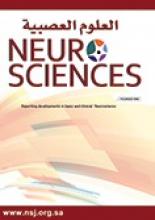Abstract
OBJECTIVE: To determine how benzodiazepine (BZD) sensitivity testing might be utilized to choose potentially useful antiepileptic drugs.
METHODS: A retrospective audit of BZD sensitivity testing was carried out on 76 difficult pediatric epileptic cases that attended the Pediatric Neurology services at The Royal Hospital for Sick Children Edinburgh, Scotland from February 2005 to February 2006. The causes and types of epilepsy varied widely, as well as the encephalographic (EEG) findings. The EEG changes post-test are categorized according to the response to BZDs into “complete,” “intermediate,” “paradoxical” and “absent response.” Similarly, the clinical outcomes after changing their antiepileptic medications have different ranges of clinical improvement from “definitive,” “partial” and “no improvement.”
RESULTS: The largest percentages of definitive improvement are seen in those with complete response. The percentage with clinical improvement tends to decrease a) with increasing numbers and amplitudes of spikes that are resistant to the action of BZD, and b) when there is a paucity of, and different distribution of fast rhythms, indicating non-viability of cortical tissues. High spike density regions in the EEG pre-test that correlate with a specific pathology, and are found post-test to be devoid of fast rhythms, may indicate focally damaged gamma-aminobutyric acid receptor areas.
CONCLUSION: The BZD sensitivity testing may influence the choice of anticonvulsants in the management of epilepsy.
- Copyright: © Neurosciences
Neurosciences is an Open Access journal and articles published are distributed under the terms of the Creative Commons Attribution-NonCommercial License (CC BY-NC). Readers may copy, distribute, and display the work for non-commercial purposes with the proper citation of the original work.






